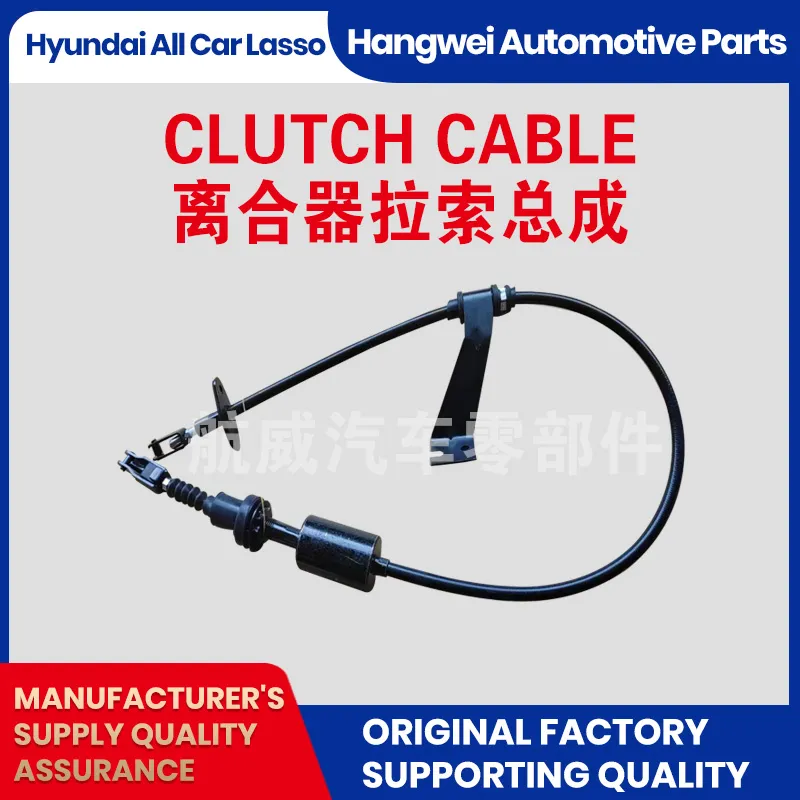throttle cable
Understanding Throttle Cables Essential Components of Automotive Performance
In the complex world of automotive engineering, each component plays a crucial role in the overall functionality and performance of a vehicle. Among these components, the throttle cable deserves special attention, as it is fundamental to the vehicle’s acceleration and speed control. This article delves into the intricacies of throttle cables, their operation, types, maintenance, and significance within the automotive context.
A throttle cable is a mechanical component that connects the accelerator pedal to the engine's throttle body. When the driver presses the accelerator, the cable pulls on the throttle, allowing more air and fuel into the engine, thus increasing the power output. This seemingly simple mechanism forms the backbone of the vehicle's responsiveness to driver inputs.
The operation of a throttle cable is based on the principles of mechanical motion. When the accelerator pedal is depressed, it creates tension in the cable, which in turn opens the throttle plate in the engine. This action is crucial for the vehicle's performance, as it dictates how quickly and efficiently the engine can respond to acceleration requests. The effectiveness of this system can significantly impact the driving experience, influencing aspects such as acceleration time, engine response, and overall vehicle dynamics.
throttle cable

There are primarily two types of throttle cables the traditional mechanical throttle cables and the electronic throttle control (ETC) systems. Traditional cables are made of flexible steel wire encased in a protective sheath, allowing for smooth movement as the cable is pulled or released. However, with advancements in technology, many modern vehicles have transitioned to electronic throttle control systems. ETC uses sensors to monitor the position of the accelerator pedal and relay that information to the engine control unit (ECU). This offers enhanced precision and responsiveness, as well as the ability to integrate with other electronic systems in the vehicle, such as cruise control and traction management.
Despite the robustness of throttle cables, they are not impervious to wear and tear. Regular maintenance is essential to ensure their longevity and effectiveness. Over time, cables can fray, stretch, or become stiff due to exposure to the elements and constant usage. Drivers may notice signs of a failing throttle cable, such as delayed acceleration, a stuck pedal, or irregular engine responses. In such cases, prompt inspection and replacement are critical to avoid safety hazards and ensure optimal vehicle performance.
Furthermore, the role of the throttle cable extends beyond mere acceleration control; it is integral to overall vehicle safety. A malfunctioning throttle cable can lead to severe consequences, including unintended acceleration or, conversely, a lack of response when trying to accelerate. These safety implications underscore the importance of regular vehicle inspections, particularly for components as vital as the throttle cable.
In conclusion, the throttle cable is an unsung hero in automotive engineering, playing a pivotal role in ensuring a responsive and safe driving experience. Whether it's the traditional mechanical cables or the sophisticated electronic control systems, understanding how these components work and their importance can enhance both vehicle performance and safety. For vehicle enthusiasts and everyday drivers alike, paying attention to the throttle cable’s condition can lead to a more enjoyable and secure driving journey. Regular maintenance and timely replacements are key to keeping this essential component in prime condition, allowing drivers to fully appreciate the performance capabilities of their vehicles.
-
Workings of Clutch Pipe and Hose SystemsNewsJun.04,2025
-
The Inner Workings of Hand Brake Cable SystemsNewsJun.04,2025
-
The Secrets of Throttle and Accelerator CablesNewsJun.04,2025
-
The Hidden Lifeline of Your Transmission Gear Shift CablesNewsJun.04,2025
-
Demystifying Gear Cables and Shift LinkagesNewsJun.04,2025
-
Decoding Clutch Line Systems A Comprehensive GuideNewsJun.04,2025
